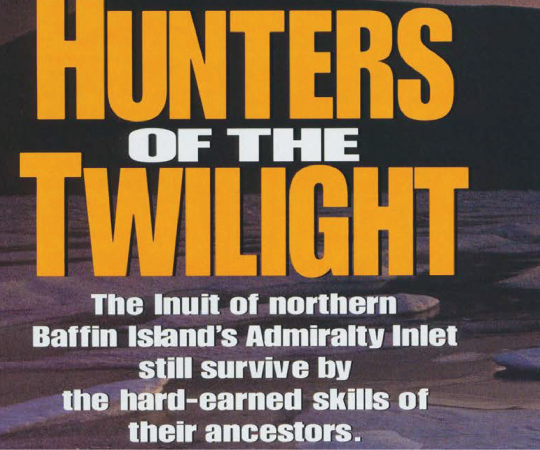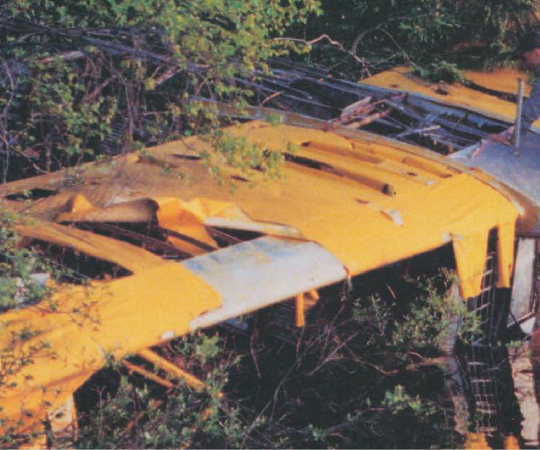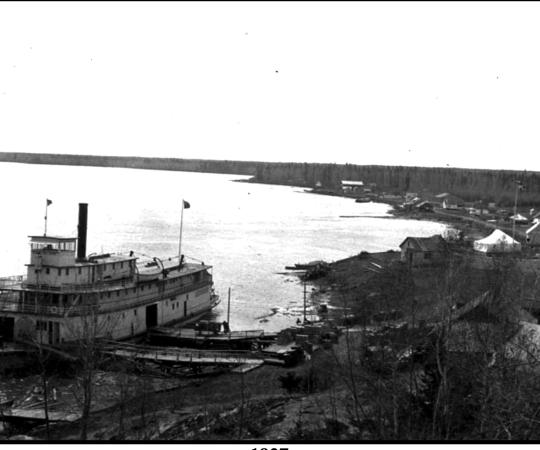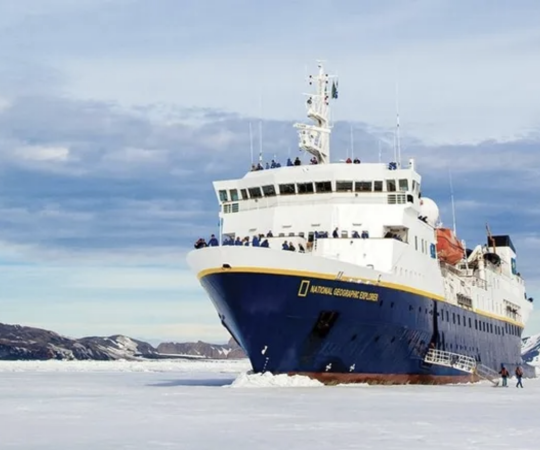The snow had been falling for days. In the last two weeks of March the powder piled up, coating the glaciers as they carved slowly through the mountains, and loading the peaks with a dangerous, unstable burden. Then, as April arrived, it brought with it a warm, capricious wind.
The Tlingit packers knew better than to head up the pass in these conditions; the more experienced prospectors followed their lead. But when the storm broke on Palm Sunday, with a burst of warm, clear weather, it was an opportunity many stampeders could not ignore. April 3, 1898, on the Chilkoot Trail: the Klondike Gold Rush was at its peak, and endless gold fields waited, the hopefuls knew, on the other side of those mountains. Many of them had already cashed in their life savings, risking all in their attempt to reach Dawson City. Nothing—not even the chance of an avalanche—should be allowed stop them on their journey to riches.
BY THE LATE WINTER of 1898, there were thousands of people lining the Chilkoot. The trail began at Dyea, the Alaskan seaport that rivaled nearby Skagway as the most important access point to the Yukon Territory and its Klondike gold. From there, it climbed to Sheep Camp, then left the treeline behind and picked its way still higher, to The Scales—the trail’s last informal settlement before the final heave up the Golden Stairs to the summit of the Chilkoot Pass, and the Canadian border.
Today, Sheep Camp is a tidy, compact campsite maintained by rangers from the U.S. National Park Service; The Scales is marked only by interpretive signage. But in 1898, the tent settlements along the Chilkoot Trail were swollen and sprawled with people.
It was there, late on a Saturday night in April, that camp restaurateurs Adolph Mueller and Ed Joppe got the first clear warnings of impending disaster. Throughout the night, they heard the snowpack above them groaning, and the faint roar of miniature slides coming down. In the morning, they helped dig out the bodies of three men who’d been buried and killed while asleep in their tent. By 10 a.m., stampeders and others who’d been headed for the summit—including a team of 22 who’d been working on the Chilkoot tramway—were retreating hurriedly down to The Scales and Sheep Camp below. Panic spread. The retreat picked up steam. Eventually, Mueller and Joppe joined the flood, scrambling and running down-trail.
At 11 a.m., as a group of a hundred or more hurried through a narrow section of trail three miles above Sheep Camp, the wall of snow and ice above them broke loose and came roaring down. When it settled, the avalanche was 50 feet deep and 150 yards long. Nobody knew exactly how many men and women it had buried.
The handful who’d escaped began digging immediately; in under an hour, they were joined by more than 2,000 stampeders who’d hurried up from Sheep Camp. Soon, bodies began to emerge from the snow.
In the quiet aftermath of the avalanche, the voices of the people under the snow drifted up to the rescuers above them. Some swore or prayed, some said their goodbyes, and some carried on calm conversations with each other as they waited. Survivors were pulled free, and joined in the digging as soon as they were able. As the hours passed, more and more of the voices under the snow went silent.
By Sunday evening, a reporter from the Dyea Press had arrived on the scene. His interview with an avalanche survivor, J.A. Rines, ran in the next day’s paper.
“All of a sudden I heard a loud report,” Rines said, “and instantly began to feel myself moving swiftly down the hill, and looking around saw many others suddenly fall down, some with their feet in the air, their heads buried out of sight in the snow. Then I realized that we were being carried away on an immense avalanche … I tried to run, but the snow caught me and I was instantly buried in 30 feet of snow. I was almost suffocated before they dug me out, being buried at least 30 minutes … I never want to experience such an awful half-hour again so long as I live, and am thankful to be well and alive.”
A steamer, the Ningchow, left Skagway the next morning, bound for San Francisco. It took less than a week for the news to race down the coast. On Saturday, April 9, the front page of the San Francisco Examiner declared: “Under an avalanche in Chilcoot (sic) Pass lie the bodies of four score Klondikers.”
“The first great disaster to overtake the adventurers struggling over the trails to the new gold fields of the Klondike is chronicled today,” the paper blared. “Minor disasters there have been, but none to compare in its appalling death list and the flash-like suddenness of its occurrence with this latest tragedy. At noon on April 3rd, when the trail over Chilcoot Pass was black with humanity toilsomely climbing the first stage of the journey to the new gold fields of the Arctic, the immense weight of snow and ice on the mountain side, loosened by the Chinook wind that had blown for two days, came thundering down into the pass, and buried beneath it four score human beings.”
The prospectors’ lust for gold had led them to ruin, the reporter wrote. “The fever in the blood of many of them has been chilled by the breath of death.” A preliminary list of those killed included gold-seekers from Portland and Seattle and Tacoma, New York City and Baltimore, Idaho and Florida. The entire 22-man shift of tramway workers was believed to be among the dead.
Back in Alaska, a makeshift morgue was set up at Sheep Camp. Eventually, unclaimed bodies were interred at Dyea, in the newly established Slide Cemetery. Survivors had continued to emerge from the snow up to 19 hours after they were buried. A few of those initially declared dead had woken up unexpectedly, but soon the remaining missing—whoever and however many they were—were presumed lost. Fifty-two bodies had been recovered.
It was clear to everyone that the massacre had been preventable—the weather in the days leading up to Palm Sunday had offered plenty of warning to anyone who cared to listen, and veterans of the trail had urged hasty stampeders to stay in camp until danger passed. But for many, the thirst for gold was fatally unquenched.
But even an avalanche couldn’t halt business. In Skagway, where a gang of con men and thugs ruled the White Pass route into the interior, word spread that the Dyea trail was impassable—and that gold-seekers ought to pass through their town instead. The Dyea Press shot back:
“In answer to the untruthful report started at Skagway, by interested parties ... that the trail was impassable ... Mr. Hammond, of the Dyea Klondike Transportation Co., says: ‘No interruption to our businesses ensue from the effects of the snow slide. We are moving freight promptly along the trail.’”
Within hours of the avalanche, even as fresh bodies continued to be extracted from the snow, the ant-like line of gold-driven men hauling their outfits up to the top of the Chilkoot Pass had reappeared. Three days after the tragedy, the Dyea Press headlines announced: “A Disastrous Avalanche… Loss of Life Greater Than At First Reported… Traffic Continues Unimpeded on the Trail.”










